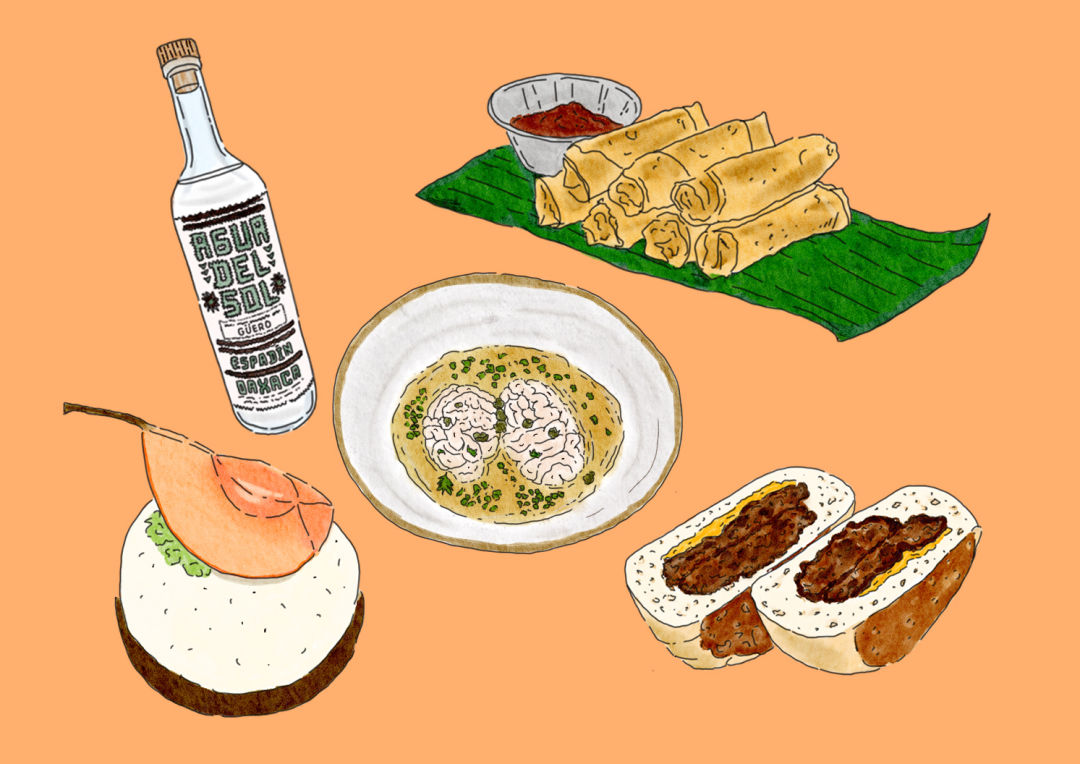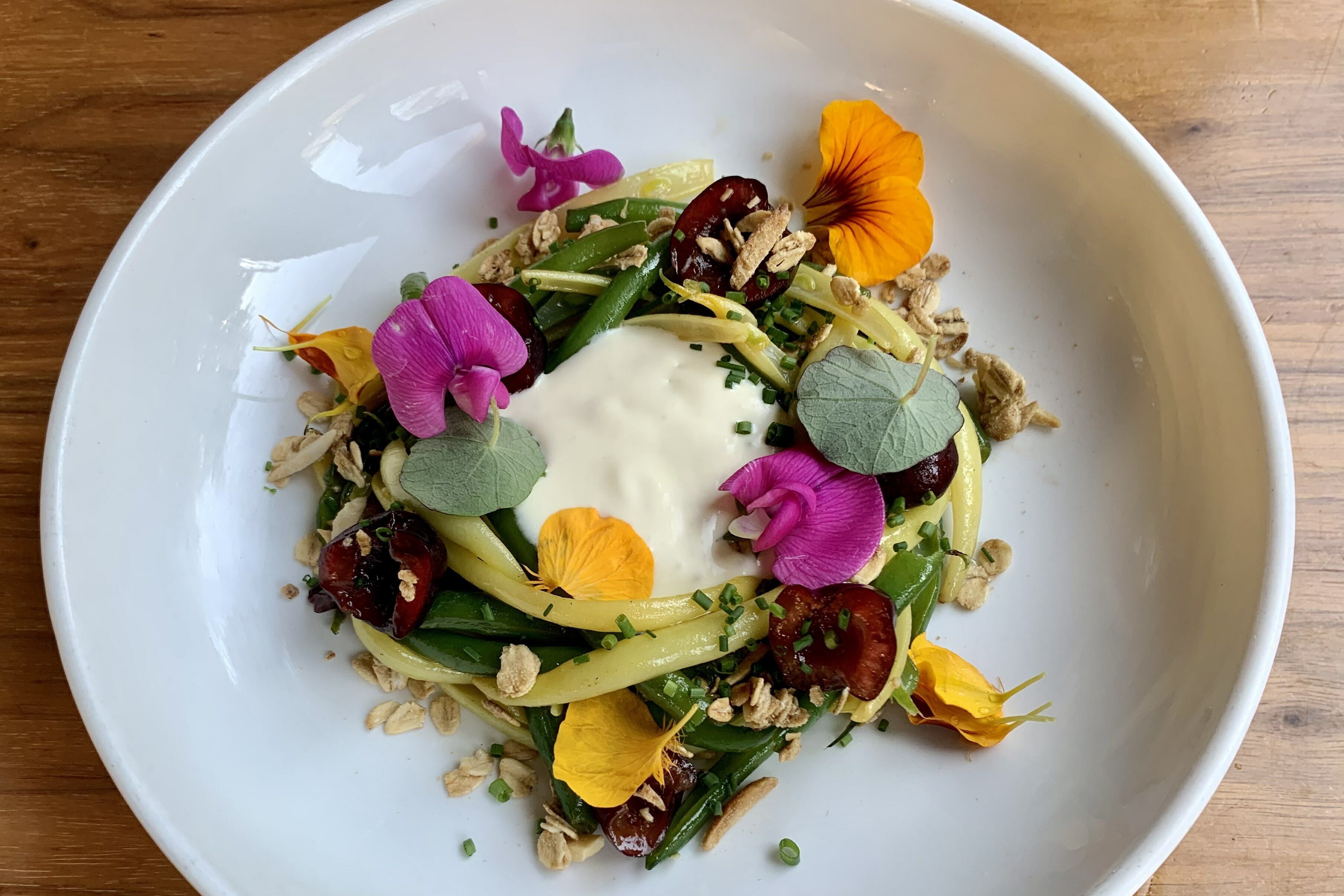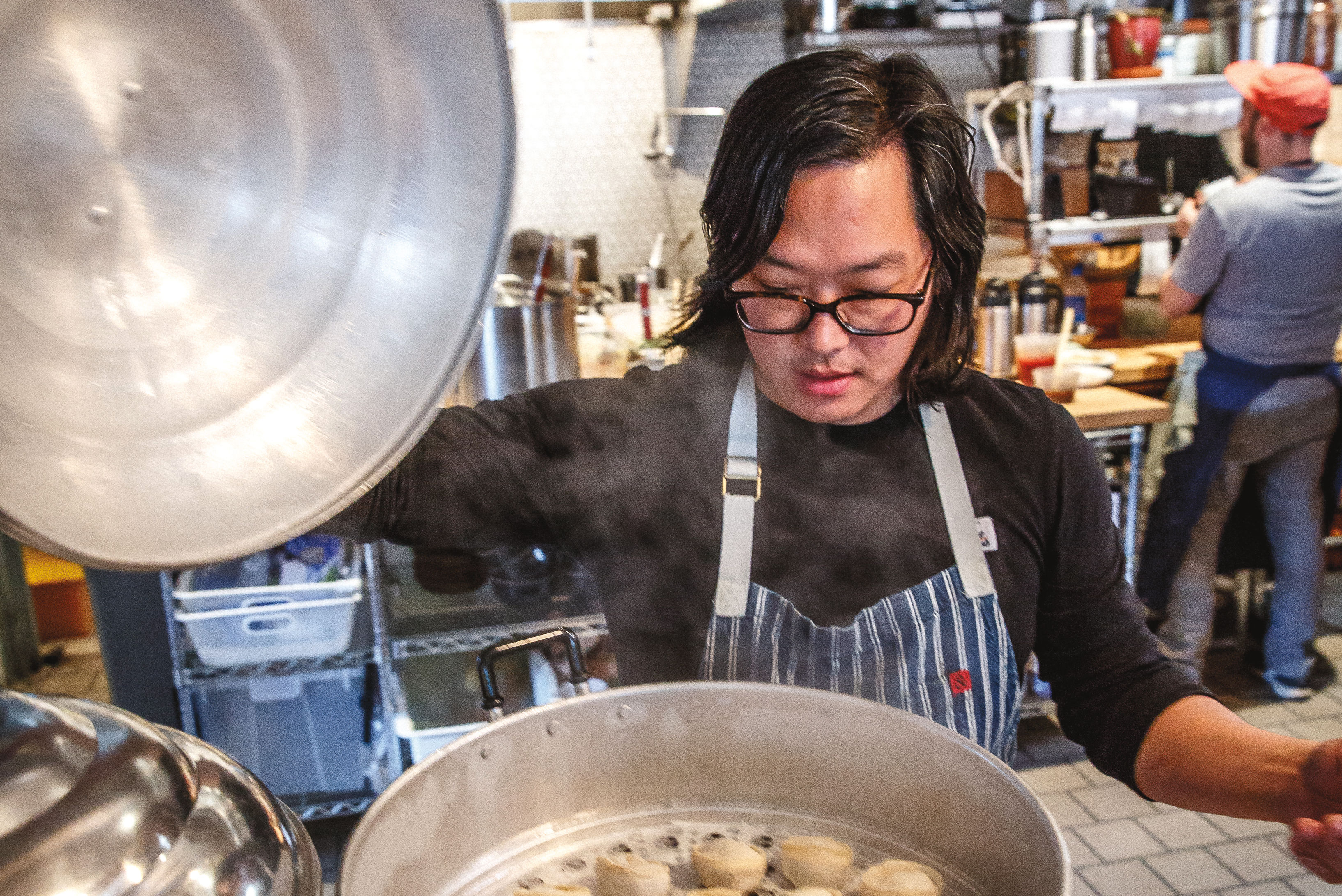Five Portland Chefs Trace Back Their Favorite Dishes and Ingredients

Image: Rebecca Nguyen
Like most creative endeavors, the genesis of a dish is rarely a clear-cut story. Instead, it’s often an amalgam of, say, what’s fresh at the market, what the internet is talking about, and what you grew up eating. Chefs’ collected skills, influences, and experiences become a toolkit to dispatch as new ideas come about and challenges arise, be they moving a dish from one restaurant to the next or morphing a savory garnish into a dessert. While putting together this year’s list of our top 50 restaurants in Portland, we asked five chefs to tell us the story behind one of their most meaningful dishes. Ingredients, peer recipes, family heirlooms, international pilgrimages, and TikTok trends all played their part.
Poached pig’s brain
John Denison, Le Clown
There are few offal cuts as notorious as brain. John Denison, who cooked at St. Jack both before and after a years-long stint in Parisian kitchens, was as wary of serving brains as the next guy. Then he ate the famous cervelle de veau at Paris’s Clown Bar. “It wasn’t fried or seared to mask what it was,” he says. Counterintuitively, its presentation as quite literally a bowl of poached brains was a gateway. No tricks. Veal is traditional, and popular in France, but Denison serves pig brains from Canby’s Revel Meat Co. at his itinerant pop-up Le Clown. It’s what he can get locally, but he’s also found the smaller size more appealing than veal. “Three, maybe four bites,” he says. Served in a grapefruit beurre blanc with crispy capers, his bowl of poached brains fits nicely on Le Clown’s modern French menu alongside blood sausage macarons, roast duck with foie gras–larded brioche, and pâté en croûte.
Bao burger
Peter Cho, Jeju
When closing his downtown restaurant Toki this past spring, chef and co-owner Peter Cho knew, of all the clever riffs on TikTok trends and bodega staples, he wanted to find a way to keep cooking its burger. “Smashburgers were sweeping the country,” Cho says, placing the now famous bao burger in the pop culture context it was born out of. “We thought, ‘Two patties, special sauce, onions, and a sesame-seed bao bun—a nod to the Big Mac.’” He had to dress it up to fit the menu at Jeju, Cho’s Korean barbecue restaurant across town. “Now we use house-dry-aged beef,” he says, “and fry thrice-cooked, British-style chips in beef fat.” The beef is trimmed from the restaurant’s steaks, and the fries, similar to the ones he once made at New York’s Spotted Pig and the Breslin, are also a nod to Micky D’s—“McDonald’s used to have all their fryers filled with beef fat.”
Familia Monterrosa’s Agua del Sol Mezcal Espadín
Megan Sanchez, Güero
Don’t let Güero’s tortas overshadow the deep, deep stock of mezcal behind the bar. Chef and owner Megan Sanchez prefers artisanal mezcals, which can be as difficult to source as they are delicious. A recent favorite is the batch Güero co-bottled with a Oaxacan distiller. “Producer Felix Monterrosa and his family distill it twice in small copper pots and crush the agave with a horse-pulled stone,” Sanchez says. “The batch is just under 700 bottles, and no two batches are alike.” Because of the variance, the OLCC treats each run as a new product, in contrast to other spirits that are watered down to match a consistent ABV, and thus only have to jump through the bureaucratic hoops once. To offset the hurdles, Sanchez has been working directly with Monterrosa: they tackled the paperwork together and Sanchez purchased an entire batch to be sold exclusively at Güero. “It comes in hot and sweet and finishes with a little earth and funk,” Sanchez says of this specific espadin mezcal. It’s great on its own, but also fit the bill for a mezcal martini she and her team have been working on. She describes it as gin-like, suited to a cocktail “that could lean on the spirit and not be doctored all that much.”
Mom’s lumpia
Carlo Lamagna, Magna Kusina
Apple, peach, pear, rhubarb, strawberry, mango, pineapple—chef Carlo Lamagna of Magna Kusina has served hot, sweet, and sour sauces made from all of the above with his lumpia, but the crispy Filipino egg rolls themselves never change. “The lumpia is Mom’s recipe,” Lamagna says. He calls rolling lumpia “a rite of passage,” and adds: “I’ve never met a Filipino or Filipina who hasn’t done it.” Per Mom’s recipe, Magna’s lumpia have mushrooms folded into the pork filling. If you time it right, you might even get an order assembled by the woman herself. “When she’s in town,” Lamagna says, “she’ll post up, put a show on her iPad, and roll lumpia for us.”
Black pepper cheesecake
Kristen D. Murray, Måurice
It’s hard to think of a Portland chef with a longer list of iconic dishes than Kristen D. Murray. There’s the polenta clafoutis, the chocolate capuchin cakes, no doubt the hand-rolled lefse. But Murray’s black pepper cheesecake is unquestionably her most celebrated dish. She’s been making a version of it since her days as the pastry chef at Aquavit in New York in the 1990s. “The chef, Marcus Samuelsson, wanted a savory cheesecake to go in a pickled herring taco,” she says. Soon it became an elaborate, Michelin-caliber tasting menu dessert assembled by a formidable team of pastry chefs. Her standards haven’t waned in the intervening decades—“the black pepper that is folded into it, it’s hand-chopped; each piece is an eighth of a sphere”—but the venue is more relaxed. The version she serves at her dreamy downtown luncheonette today is casual only in appearance: a dome of airy crème fraiche and cream cheese cheesecake sits on a walnut, almond, and pine nut sablé cookie dressed with seasonal fruit.




